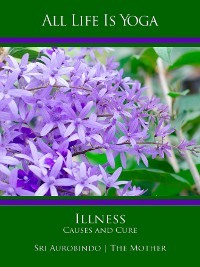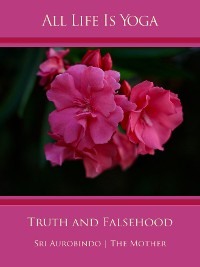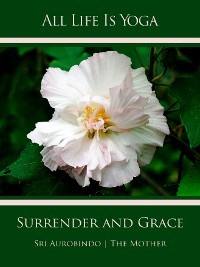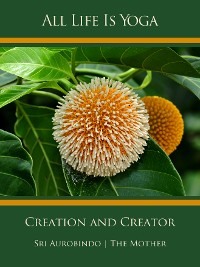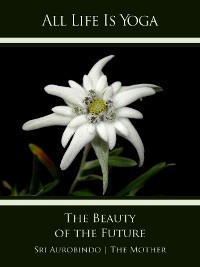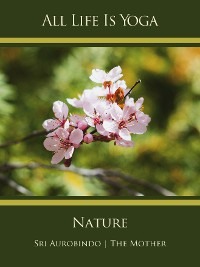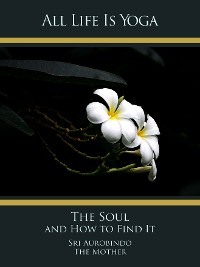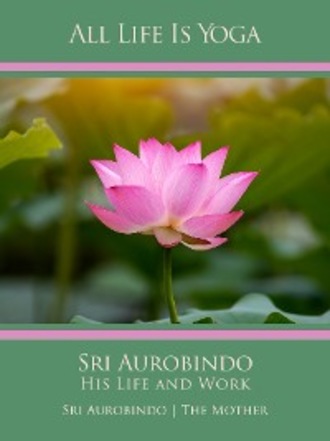
Полная версия
All Life Is Yoga: Sri Aurobindo – His Life and Work
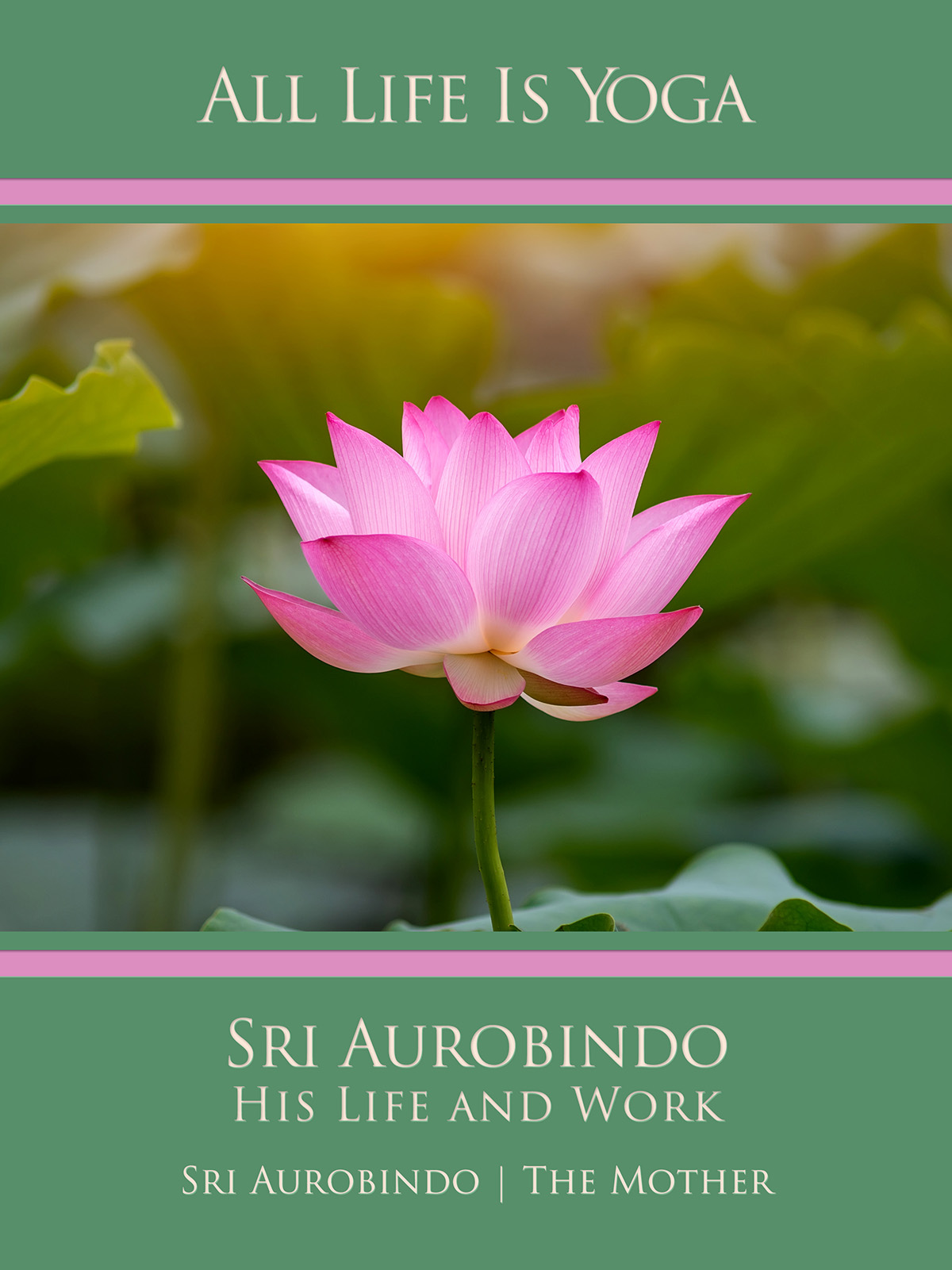

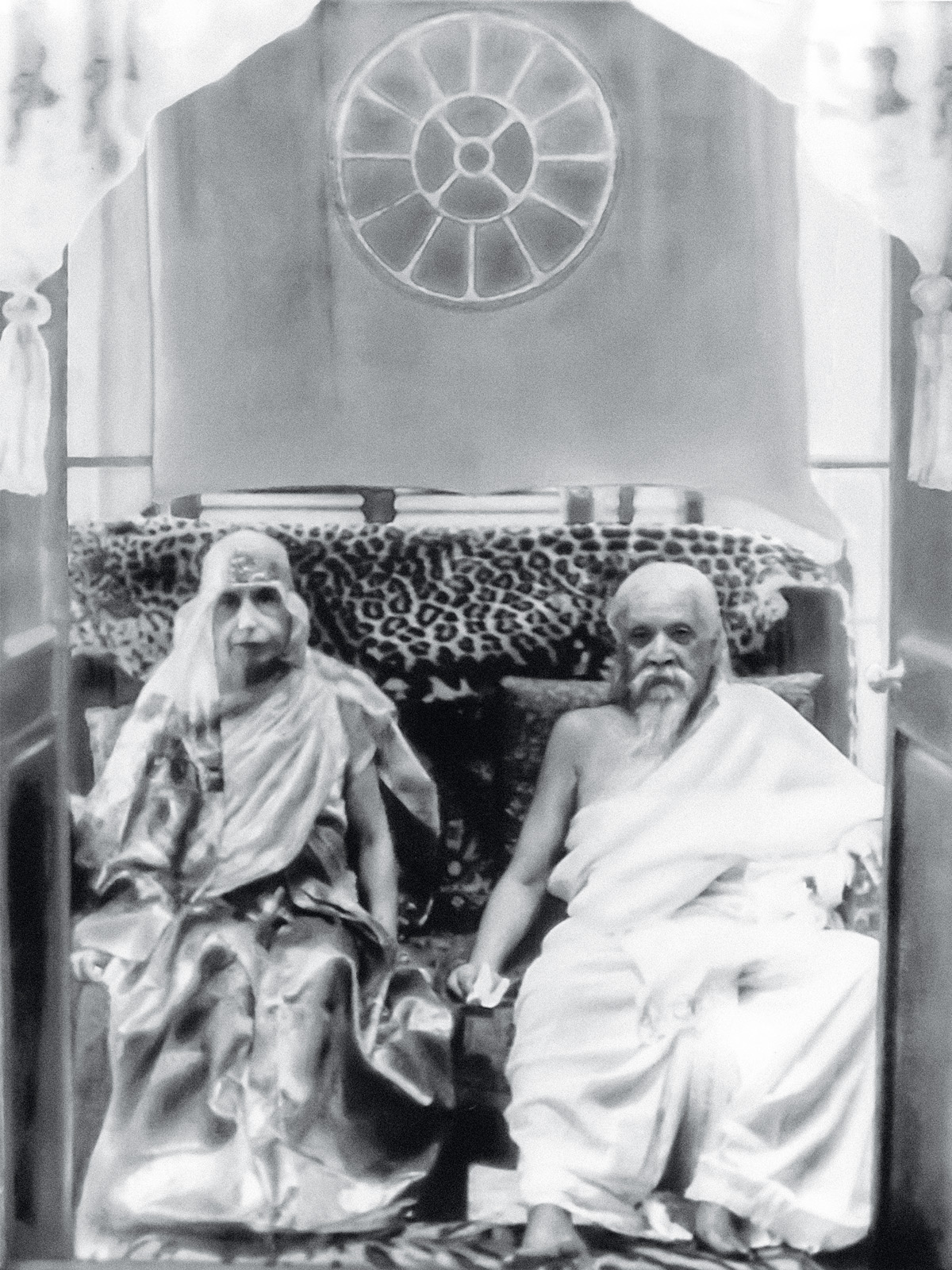
THE MOTHER – SRI AUROBINDO
Darshan Sri Aurobindo's and the Mother
All
Life
is
Yoga
„All life is Yoga.” – Sri Aurobindo
Sri Aurobindo
His Life and Work
Selections from the Works of
Sri Aurobindo
and
The Mother

SRI AUROBINDO
DIGITAL EDITION

Copyright 2019
AURO MEDIA
Verlag und Fachbuchhandel
Wilfried Schuh
eBook Design

SRI AUROBINDO DIGITAL EDITION
Germany, Berchtesgaden
ALL LIFE IS YOGA
Sri Aurobindo – His Life and Work
Selections from the Works of
Sri Aurobindo and The Mother
First edition 2019
ISBN 978-3-96387-023-1
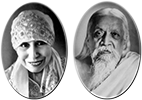
© Photos and selections of the works of Sri Aurobindo and the Mother:
Sri Aurobindo Ashram Trust
Puducherry, India

Flower on the cover:
Nelumbo nucifera. Pinkish red.
Spiritual significance and explanation given by the Mother:
Avatar – the Supreme manifest on earth in a body The red lotus is Sri Aurobindo's flower.
Publisher‘s Note
This is one in a series of some e-books created by SRI AUROBINDO DIGITAL EDITION and published by AURO MEDIA under the title All Life Is Yoga. Our effort is to bring together, from Sri Aurobindo and the Mother, simple passages with a practical orientation on specific subjects, so that everyone may feel free to choose a book according to his inner need. The topics cover the whole field of human activity, because true spirituality is not the rejection of life but the art of perfecting life.
While the passages from Sri Aurobindo are in the original English, most of the passages from the Mother (selections from her talks and writings) are translations from the original French. We must also bear in mind that the excerpts have been taken out of their original context and that a compilation, in its very nature, is likely to have a personal and subjective approach. A sincere attempt, however, has been made to be faithful to the vision of Sri Aurobindo and the Mother.
The excerpts from the writings of Sri Aurobindo and the Mother carry titles and captions chosen by the editor, highlighting the theme of the excerpts and, whenever possible, borrowing a phrase from the text itself. The sources of the excerpts are given at the end of each issue.
We hope these e-books will inspire the readers to go to the complete works and will help them to mould their lives and their environments towards an ever greater perfection.
“True spirituality is not to renounce life, but to make life perfect with a Divine Perfection.” – The Mother
ContentsTitle PageCopyrightPublisher‘s NoteQuotation from Sri AurobindoI. Sri Aurobindo and His Ashram1. Early Life and CareerPhoto Gallery I2. Political LifePhoto Gallery II3. Spiritual LifePhoto Gallery IIIII. The Ashram and the Teaching1. Sri Aurobindo's Asram2. Sri Aurobindo's TeachingIII. Sri Aurobindo's Messages1. Uttarpara Speech2. A Message to the West3. The Fifteenth of August 1947IV. Sri Aurobindo's Birthdays 1923-19261. The Fifteenth of August 19232. Celebration of the 15th of August 19243. 15th of August 19254. The Meaning of the 15th of AugustV. Sri Aurobindo on Himself1. Sri Aurobindo and the Mother as Avataras2. Identity of Consciousness and PathVI. The Mother on Sri Aurobindo1. Sri Aurobindo2. Mahasamadhi3. Eternal Presence4. Work and Teaching5. Sri Aurobindo's SymbolAPPENDIXReferencesGuideCoverTable of ContentsStart Reading
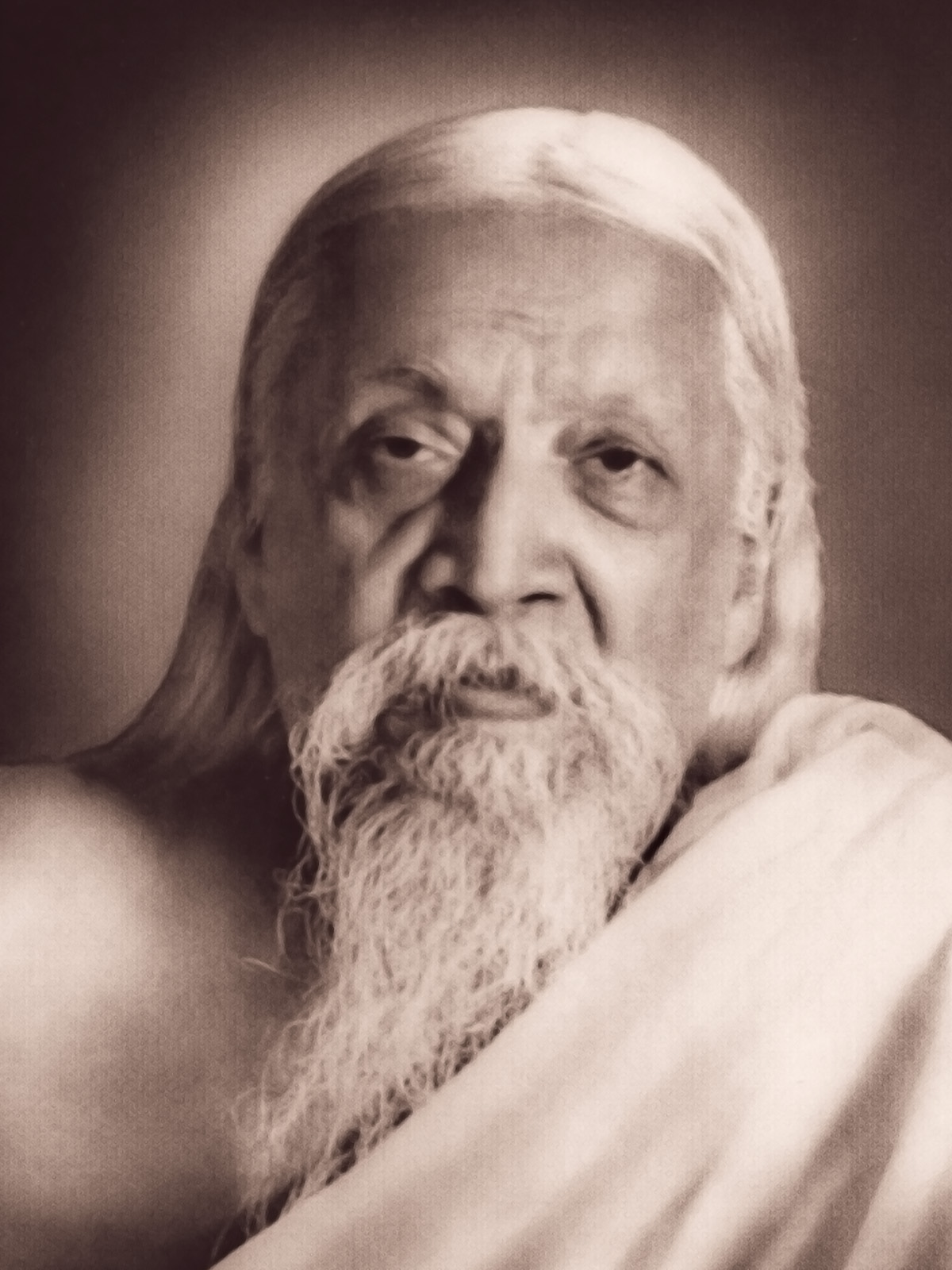
Sri Aurobindo
Besides, it would be only myself who could speak of things in my past, giving them their true form and significance.
* * *
I see that you have persisted in giving a biography – is it really necessary or useful? The attempt is bound to be a failure, because neither you nor anyone else knows anything at all of my life; it has not been on the surface for man to see. — Sri Aurobindo.
Part One
Sri Aurobindo and His Ashram
Sri Aurobindo lived at first in retirement at Pondicherry with four or five companions. Afterwards more and yet more began to come to him to follow his spiritual path and the number became so large that a community of sadhaks had to be formed for the maintenance and collective guidance of those who had left everything behind for the sake of a higher life. This was the foundation of the Sri Aurobindo Ashram which has less been created than grown around him as its centre. — Sri Aurobindo
Chapter I
Early Life and Career
Sri Aurobindo was very emphatic in stating that only he could write truly about himself; but he never wrote any comprehensive or systematic account of his life. Only in his correspondence with his disciples and others he sometimes explained points by incidentally referring to some event in his own life or some experience in his own Yogic development. Also on a few occasions he corrected misleading statements concerning him published in some journals and books and gave notes about some points in his life to three of his biographers who had submitted their manuscripts to him for verification. Some of this material has been compiled and presented in a systematic arrangement and published by Sri Aurobindo Ashram in 1948 with the title "Sri Aurobindo and His Ashram". Sometimes, in order to avoid a direct personal reference, Sri Aurobindo used to write about himself in the third person. This is the reason why at a few places in the book the reference to Sri Aurobindo is in the third person.
Sri Aurobindo was born in Calcutta on August 15, 1872. At the age of five he was sent along with his two elder brothers, Benoybhushan and Manmohan, to the Loretto Convent School at Darjeeling. After two years, in 1879, he was taken with his elder brothers to England for education. Sri Aurobindo lived in England for fourteen years. He was brought up at first in an English family (the Drewett family) at Manchester. While his two brothers, Benoybhushan and Manmohan went to the Manchester Grammar School, Sri Aurobindo was privately educated by Mr. and Mrs. Drewett. Mr. Drewett was an accomplished Latin scholar; he taught Sri Aurobindo Latin so well that when the latter had joined St. Paul’s School in London in 1885, the Headmaster himself took up Sri Aurobindo personally to ground him in Greek and then pushed him rapidly through the higher classes of the School. Towards the end of 1889 he went from St. Paul’s with a senior classical scholarship to King’s College, Cambridge, where he studied for two years. Sri Aurobindo gave much attention to the classics at Manchester and at Saint Paul’s ; but in his last three years at St. Paul’s he paid less attention to these subjects, taking them only casually, and spent all his time outside school in general reading, especially English poetry, literature and fiction, French literature and the history of ancient, mediaeval and modern Europe. He spent some time also over learning Italian, some German and a little Spanish. He spent much time too in writing poetry. The school studies during this period engaged very little of his time; he was already at ease in them and did not think it necessary to labour over them any longer. All the same he was able to win all the prizes in King’s College in one year for Greek and Latin verse. At Cambridge Sri Aurobindo passed high in the First Part of the Tripos (first class); it was on passing this First Part that the degree of B.A. is usually given; but as he had only two years at his disposal, he had to pass it in his second year at Cambridge, and the First Part gives the degree only if it is taken in the third year; if one takes it in the second year one has to appear for the second part of the Tripos in the fourth year to qualify for the degree. He might have got the degree if he had made an application for it, but he did not care to do so. A degree in England is valuable only if one wants to take up an academical career.
In 1890 he passed the open competition for the Indian Civil Service, but he neglected his lessons in riding and failed in the last riding test. He was, as is often done, given another chance to pass, but avoided presenting himself in time for the test. He was on this pretext disqualified for the Service, although in similar cases successful probationers have been given a further chance to qualify themselves in India itself. He felt no call for the I.C.S. and was seeking some way to escape from that bondage. He thus deliberately disqualified himself without himself rejecting the Service, which his family would not have allowed him to do.
At the age of eleven Sri Aurobindo had already received strongly the impression that a period of general upheaval and great revolutionary changes was coming in the world and he himself was destined to play part in it. His father in his letters had bitterly complained of the mechanical character and heartlessness of the British Government in India. He also sent him Indian newspapers marking for attention news items relating to maltreatment of Indians by Englishmen in that country. This and other circumstances raised a feeling of resentment against the subjection of India to a foreign rule. But the decision to take part himself in some action directed towards the liberation of the country took shape only after some years. At Cambridge as a member of the Indian Majlis of which latterly he became the secretary, he delivered many revolutionary speeches which, as he afterwards learnt, had their part in determining the authorities to exclude him from the Indian Civil Service. Among the Indians in London he and his brothers formed a part of a small revolutionary group who rebelled habitually against the leadership of Dadabhai Naoroji and his moderate politics. During the last days of his stay in England he attended a private meeting of Indians in London at which there was formed a secret society with the romantic name of the “Lotus and Dagger” in which all the members took the vow to adopt each some chosen part which would help in leading to the overthrow of foreign rule. But the society was still-born and its members dispersed without meeting again; some however kept individually to their vow and one of these was Sri Aurobindo.
When Sri Aurobindo was disqualified for the Indian Civil Service, the Gaekwar of Baroda was in London. Sri Aurobindo was introduced to him by the brother of Sir Henry Cotton and obtained an appointment in the Baroda service and left England in February, 1893.
Sri Aurobindo passed thirteen years, from 1893 to 1906, in the Baroda service, first in the Settlement and Revenue Department and in secretariate work for the Maharaja, afterwards as Professor of English and, finally, Vice-Principal in the Baroda College. These were years of self-culture, of literary activity-for much of the poetry afterwards published from Pondicherry was written at this time-and of preparation for his future work. In England he had received, according to his father’s express instructions, an entirely occidental education without any contact with the culture of India and the East. At Baroda he made up the deficiency, learned Sanskrit and several modern Indian languages, especially Marathi and Gujarati, the two official languages of the Baroda State. He learnt Bengali very quickly and for the most part all by himself.1 A great part of the last years of this period was spent on leave in silent political activity, for he was barred from public action by his position at Baroda. The outbreak of the agitation against the partition of Bengal in 1905 gave him the opportunity to give up the Baroda service and join openly in the political movement. He left Baroda in 1906 and went to Calcutta as Principal of the newly-founded Bengal National College.
* * *
1 Dinendra Kumar Roy lived with Sri Aurobindo in Baroda as a companion and his work was rather to help him to correct and perfect his knowledge of the language and to accustom him to conversation in Bengali than any regular teaching.
Photo Gallery I
Almost all the photographs are accompanied
by a quotation from Savitri.
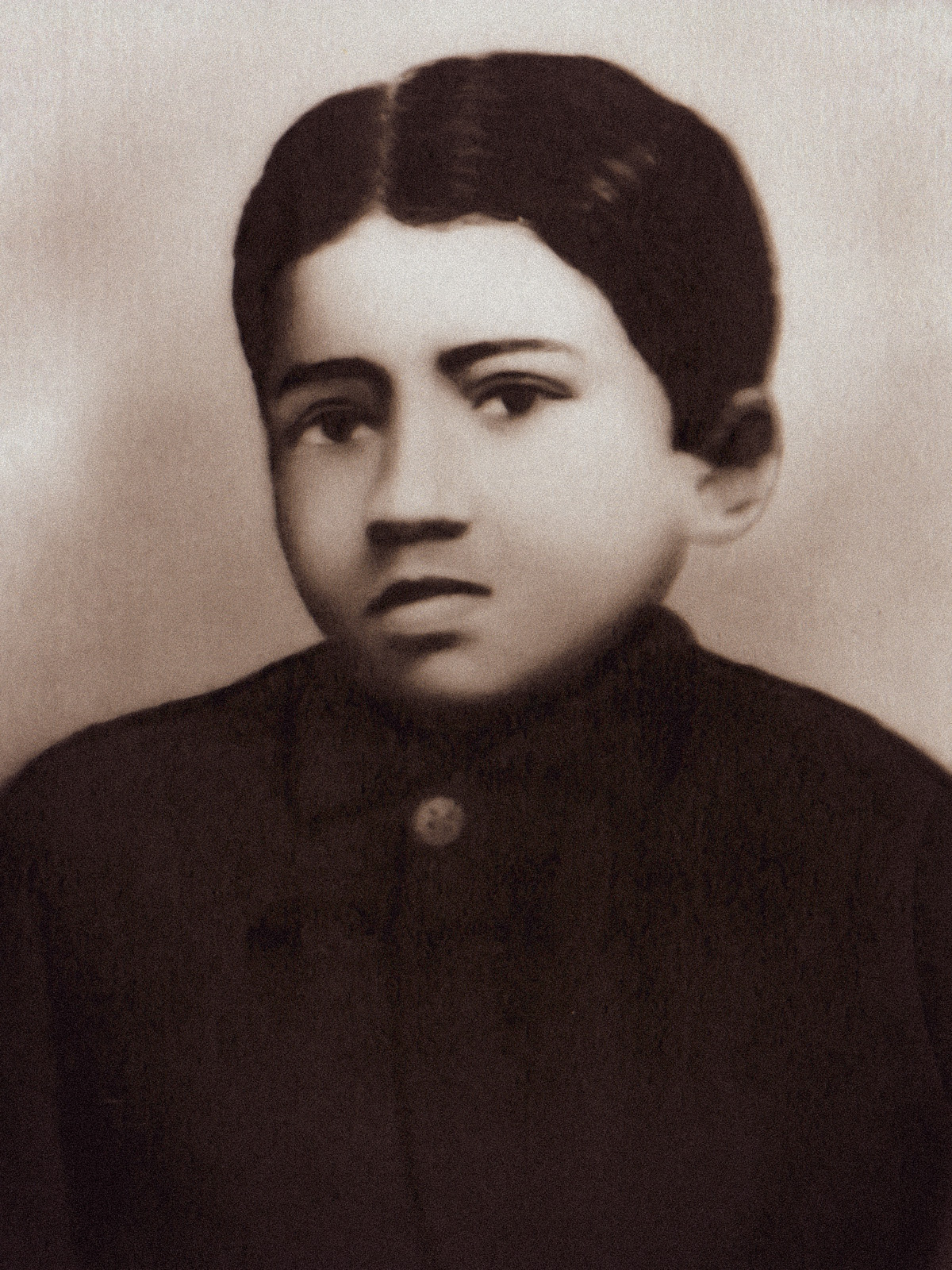
London circa 1879
This screened unrecognised Inhabitant
Hides in a small dumb seed his cosmic thought
Chapter II
Political Life
There were three sides to Sri Aurobindo’s political ideas and activities. First, there was the action with which he started, a secret revolutionary propaganda and organisation of which the central object was the preparation of an armed insurrection. Secondly, there was a public propaganda intended to convert the whole nation to the ideal of independence which was regarded, when he entered into politics, by the vast majority of Indians as unpractical and impossible, an almost insane chimera. It was thought that the British Empire was too powerful and India too weak, effectively disarmed and impotent even to dream of the success of such an endeavour. Thirdly, there was the organisation of the people to carry on a public and united opposition and undermining of the foreign rule through an increasing non-cooperation and passive resistance.
At that time the military organisation of the great empires and their means of military action were not so overwhelming and apparently irresistible as they now are: the rifle was still the decisive weapon, air power had not developed and the force of artillery was not so devastating as it afterwards became. India was disarmed, but Sri Aurobindo thought that with proper organisation and help from outside this difficulty might be overcome and in so vast a country as India .and with the smallness of the regular British armies, even a guerrilla warfare accompanied by general resistance and revolt might be effective. There was also the possibility of a great revolt in the Indian army. At the same time he had studied the temperament and characteristics of the British people and the turn of their political instincts, and he believed that although they would resist any attempt at self-deliberation by the Indian people and would at the most only concede very slowly such reforms as would not weaken their imperial control, still they were not of the kind which would be ruthlessly adamantine to the end: if they found resistance and revolt becoming general and persistent they would in the end try to arrive at an accommodation to save what they could of their empire or in an extremity prefer to grant independence rather than have it forcefully wrested from their hands.
In some quarters there is the idea that Sri Aurobindo’s political standpoint was entirely pacifist, that he was opposed in principle and in practice to all violence and that he denounced terrorism, insurrection etc. as entirely forbidden by the spirit and letter of the Hindu religion. It is even suggested that he was a forerunner of the gospel of Ahimsa. This is quite incorrect. Sri Aurobindo is neither an impotent moralist nor a weak pacifist.
The rule of confining political action to passive resistance was adopted as the best policy for the National Movement at that stage and not as a part of a gospel of Non-violence or pacific idealism. Peace is a part of the highest ideal, but it must be spiritual or at the very least psychological in its basis; without a change in human nature it cannot come with any finality. If it is attempted on any other basis (moral principle or gospel of Ahimsa or any other) it will fail, and even may leave things worse than before. He is in favour of an attempt to put down war by international agreement and international force, what is now contemplated in the “New Order”, if that proves possible, but that would not be Ahimsa, it would be a putting down of anarchic force by legal force, and even then one cannot be sure that it would be permanent. Within nations this sort of peace has been secured, but it does not prevent occasional civil wars and revolutions and political outbreaks and repressions, sometimes of a sanguinary character. The same might happen to a similar world-peace. Sri Aurobindo has never concealed his opinion that a nation is entitled to attain its freedom by violence, if it can do so or if there is no other way; whether it should do so or not, depends on what is the best policy, not on ethical considerations. Sri Aurobindo’s position and practice in this matter was the same as Tilak’s and that of other Nationalist leaders who were by no means Pacifists or worshippers of Ahimsa...
Photo Gallery II
Almost all the photographs are accompanied
by a quotation from Savitri.
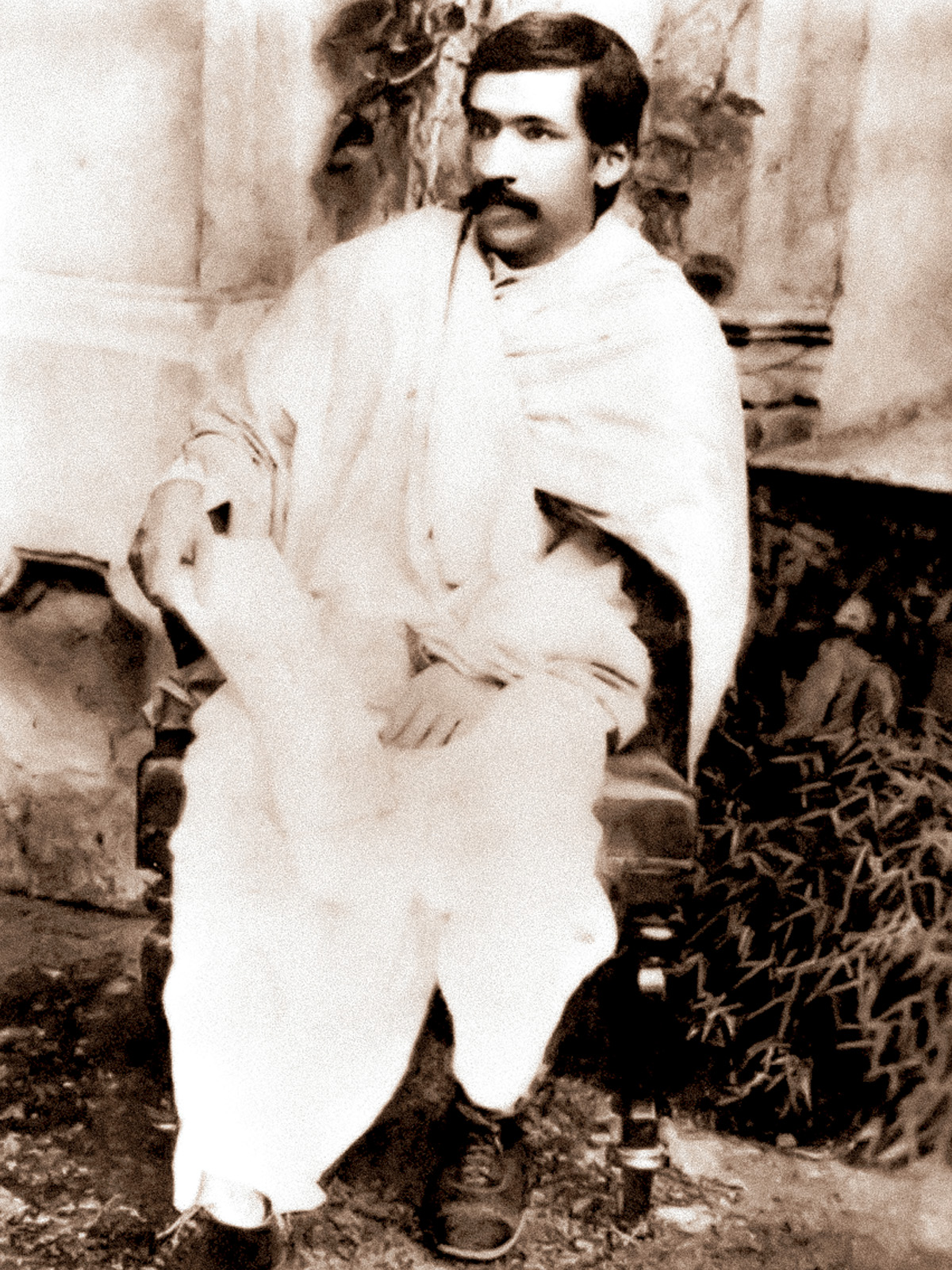
Calcutta, September 1907
His mind was like a fire assailing heaven,
His will a hunter in the trails of light
Chapter III
Spiritual Life
Sri Aurobindo began his Yoga in 1904. Even before this he had already some spiritual experiences and that before he knew anything about Yoga or even what Yoga was. For example, a vast calm descended upon him at the moment when he stepped first on Indian soil after his long absence, in fact with his first step on the Apollo Bunder in Bombay. This calm surrounded him and remained for long months afterwards. There was also a realisation of the vacant Infinite while walking on the ridge of the Takht-i-Suleman in Kashmir, the living presence of Kali in a shrine on the banks of the Narmada, the vision of the Godhead surging up from within when in danger of a carriage accident in Baroda in the first year of his stay etc. But these were inner experiences coming of themselves and with a sudden unexpectedness, not part of a sadhana. He started Yoga by himself without a Guru getting the rule from a friend, a disciple of Brahmananda of Ganga Matt; it was confined at first to assiduous practice of Pranayam (at one time for six or more hours a day). There was no conflict or wavering between Yoga and politics; when he started Yoga, he carried on both without any idea of opposition between them. He wanted however to find a Guru. He met a Naga Sannyasi, one of the heads, in the course of this search, but did not accept him as Guru, but was confirmed by him in a belief in Yoga-power when he saw him cure Barin in almost a moment of a violent and clinging hill fever by merely cutting through a glassful of water crosswise with a knife while he repeated a silent mantra. Barin drank and was cured. Sri Aurobindo also met Brahmananda and was greatly impressed by him; but he had no helper or Guru in Yoga till he met Lele in Baroda and that was only for a short time. Meditating only for three days with Lele, he followed his instructions for silencing the mind and freeing it from the constant pressure of thought; he entered into an absolute and complete silence of the mind and indeed of the whole consciousness and in that silence had suddenly the enduring realisation of the indefinable Brahman, Tat, in which the whole universe seemed to be unreal and only That existed. This silence he kept for several months and it remained always within him; for when activity returned, it proceeded on the surface and within him all was calm. But at the time there was not the slightest activity of any kind even on the surface; there was only a still motionless perception spiritual and mental in its character . But this was not what Lele wanted, for he wanted the silence only in order that the inner voice of the heart might be heard without any thought interference; so he did his best to get him out of this Advaitic condition. A meeting was to be held in Bombay to hear Sri Aurobindo speak and he asked Lele how he was to speak when not even the shadow of a passing thought could arise in him. Lele told him to make namaskar before delivering a speech to the audience and wait and speech would come to him from another source than the mind. So in fact, when he was about to address the meeting, speech came. It should be noted however that Sri Aurobindo was not at any time in trance and something saw all that happened and spoke and acted according to need without the necessity of any conceptual thought or personal volition. Ever since all the mental activities, speech, writing, thought, will and other kindred activities have so come to him from the same source above the brain-mind; he had entered into the spiritual mind and what he afterwards called the overhead consciousness. This was his first major and fundamental Yogic realisation and experience and the true beginning and foundation of his Yoga...
Photo Gallery III
Almost all the photographs are accompanied
by a quotation from Savitri.
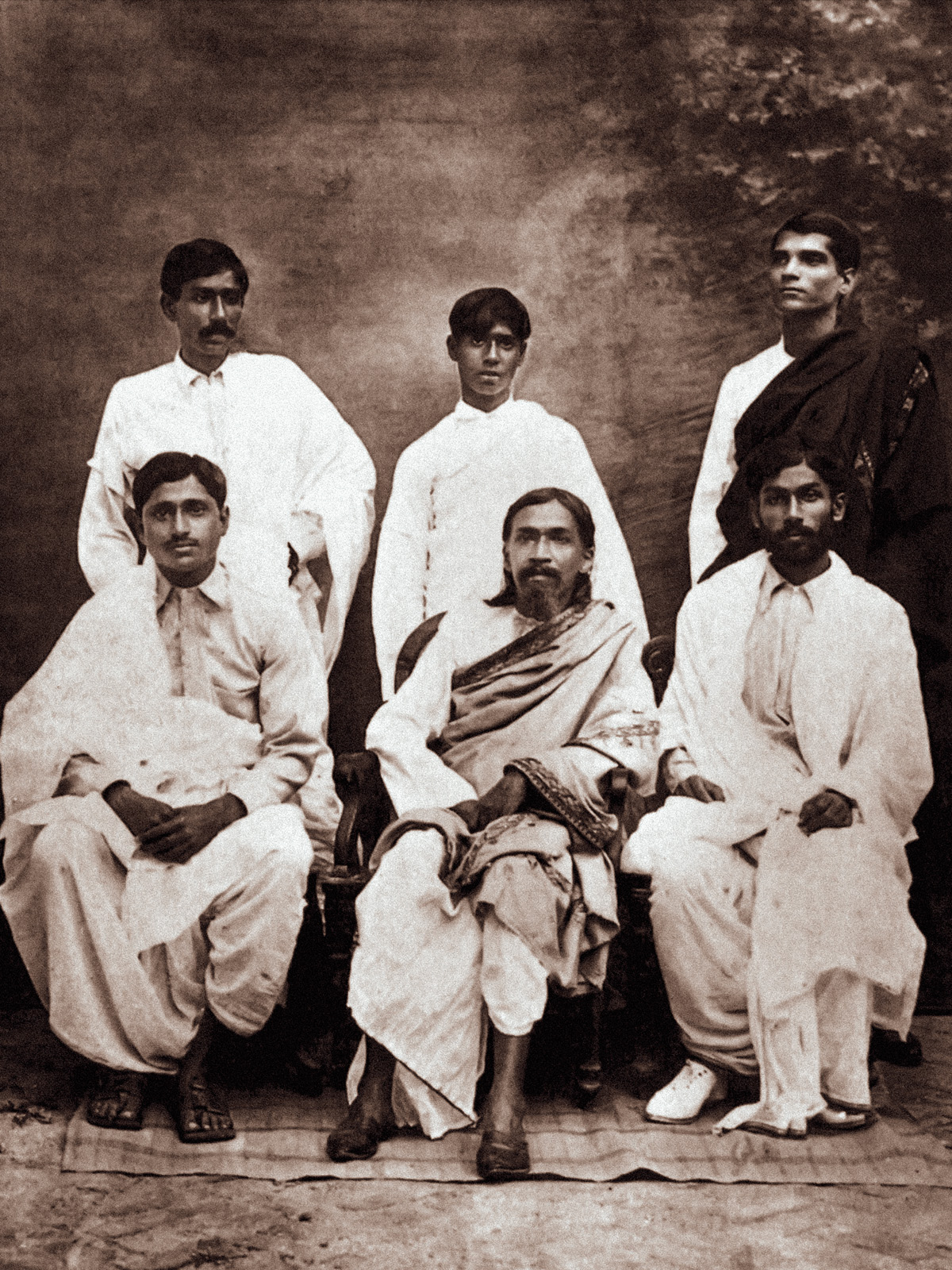
Pondicherry 1911-20
Far-wandering seekers on the Eternal’s path
Brought to these quiet founts their spirit’s thirst
Part Two
The Ashram and the Teaching
The Asram is not a religious association. Those who are here come from all religions and some are of no religion. There is no creed or set of dogmas, no governing religious body; there are only the teachings of Sri Aurobindo and certain psychological practices of concentration and meditation etc., for the enlarging of the consciousness, receptivity to the Truth, mastery over the desires, the discovery of the divine Self and Consciousness concealed within each human being, a higher evolution of the nature. — Sri Aurobindo
Chapter I
Sri Aurobindo's Asram
Words of Sri Aurobindo
In order to remove many misunderstandings which seem to have grown up about his Asram in Pondicherry Sri Aurobindo considers it necessary to issue the following explicit statement.
An Asram means the house or houses of a Teacher or Master of spiritual philosophy in which he receives and lodges those who come to him for the teaching and practice. An Asram is not an association or a religious body or a monastery-it is only what has been indicated above and nothing more...
Chapter II
Sri Aurobindo's Teaching
Words of Sri Aurobindo
The teaching of Sri Aurobindo starts from that of the ancient sages of India that behind the appearances of the universe there is the Reality of a Being and Consciousness, a Self of all things one and eternal. All beings are united in that One Self and Spirit but divided by a certain separativity of consciousness, an ignorance of their true Self and Reality in the mind, life and body. It is possible by a certain psychological discipline to remove this veil of separative consciousness and become aware of the true Self, the Divinity within us and all...


